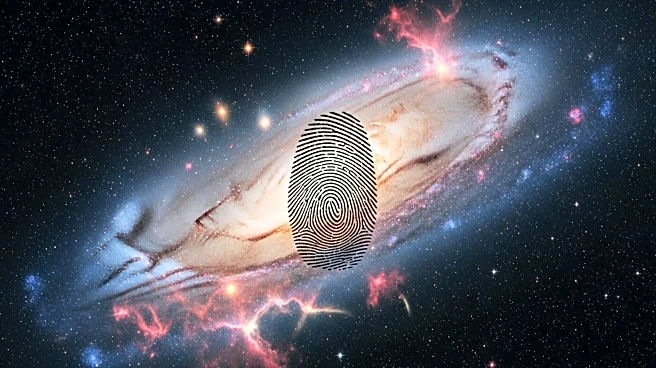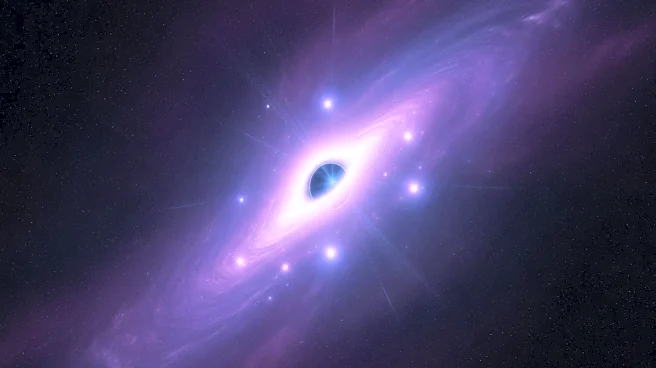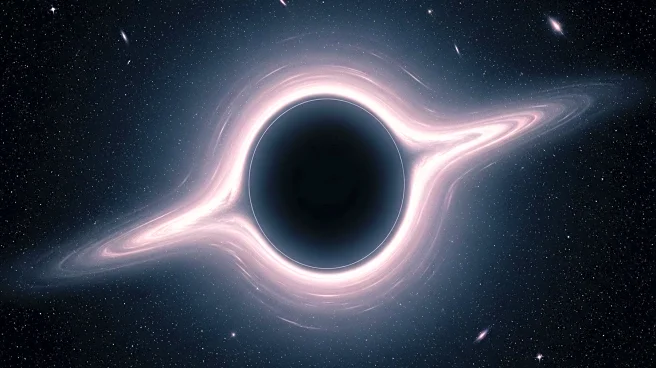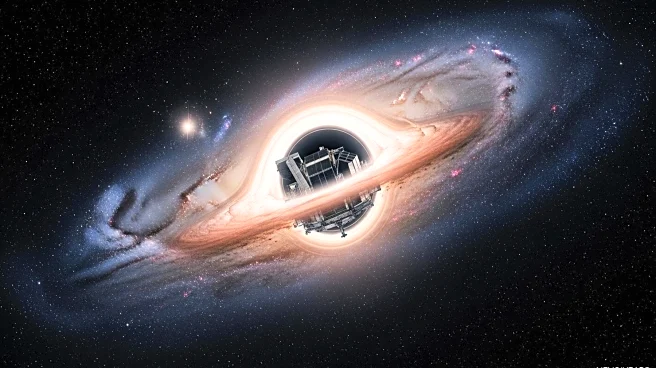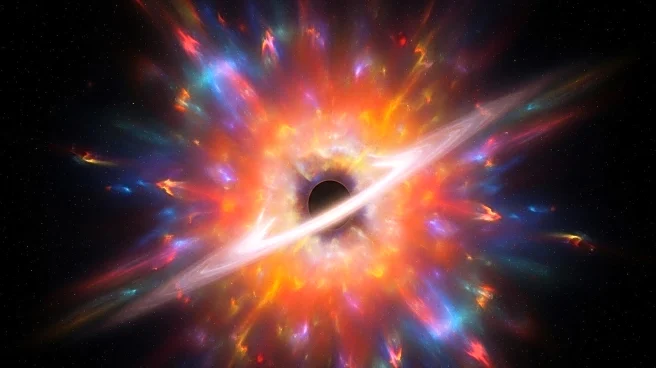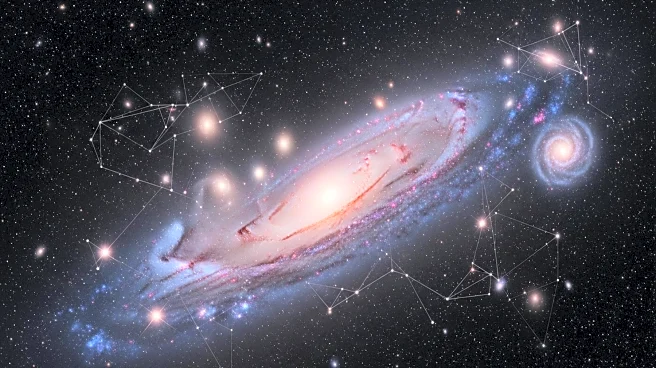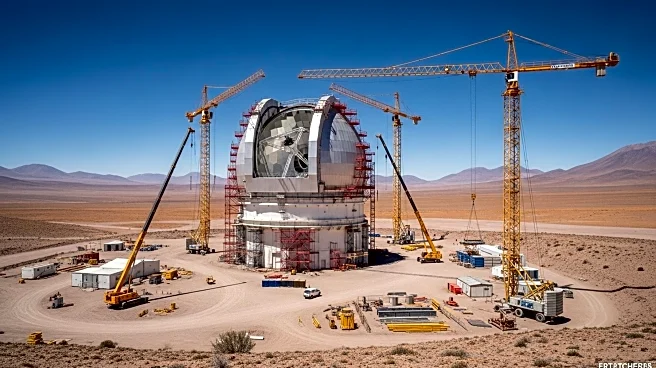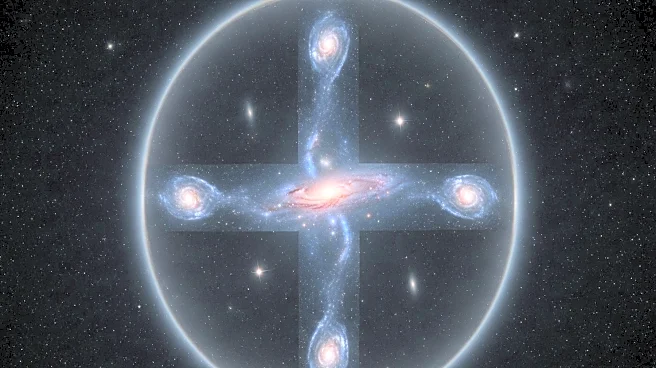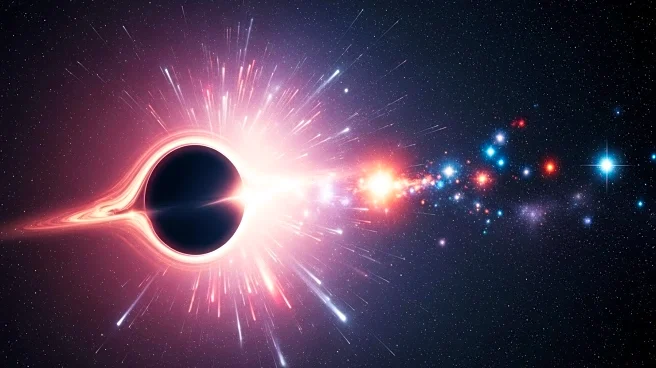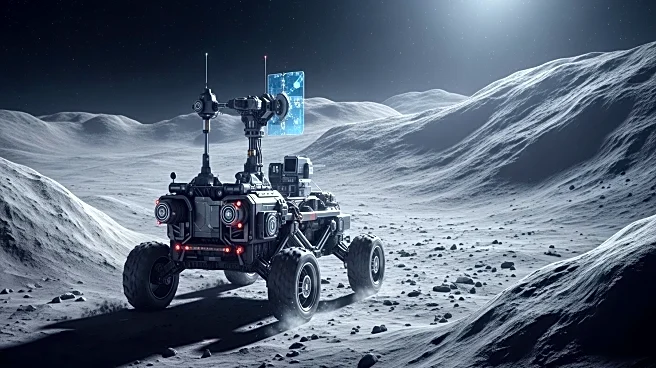What's Happening?
Researchers at McGill University have discovered a new application for fast radio bursts (FRBs) in mapping the universe's missing baryonic matter. During a routine data review from the Canadian Hydrogen Intensity Mapping Experiment, doctoral student Vishwangi Shah and her team identified FRBs originating from a 'dead' galaxy, challenging existing theories about their sources. These FRBs, energetic pulses of radio waves, are now being used to trace baryonic matter, which includes protons and neutrons, across cosmic distances. This discovery could help solve the 'missing baryon problem,' where only 70% of predicted baryonic matter has been detected. By measuring the dispersion of FRBs as they travel through space, scientists can locate baryonic matter that interacts with light, unlike dark matter.
Why It's Important?
The ability to map baryonic matter using FRBs has significant implications for understanding the universe's structure and evolution. Baryonic matter is crucial for models of the Big Bang and the formation of elements. Accurate mapping can enhance models of galaxy formation, stellar evolution, and the behavior of supermassive black holes. This research supports the Lambda Cold Dark Matter model, reinforcing the predicted composition of the universe since the Big Bang. The findings could lead to better predictions about how galaxies recycle gas and spread elements, offering insights into cosmic history and the distribution of matter.
What's Next?
Future research will focus on scaling up the detection and localization of FRBs to create a comprehensive map of baryonic matter. Projects like the Canadian Hydrogen Intensity Mapping Experiment and the Deep Synoptic Array 2000 are expanding their capabilities to pinpoint FRB origins. These efforts aim to trace thousands of FRBs annually, providing a detailed cosmic map. This data will allow astronomers to analyze the spatial distribution of matter, potentially revealing the universe's underlying structure. The goal is to develop a 'baryonic Google Maps' that complements knowledge of dark matter, enhancing our understanding of the universe's arrangement.
Beyond the Headlines
The use of FRBs to map baryonic matter highlights the innovative approaches scientists are taking to solve longstanding cosmic mysteries. This method not only addresses the missing baryon problem but also opens new avenues for studying the universe's invisible structures. The research underscores the importance of interdisciplinary collaboration in advancing astrophysical knowledge and the potential for unexpected discoveries in routine data analysis.

